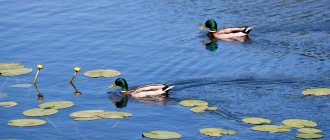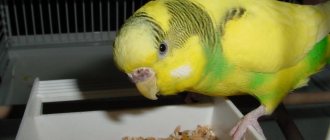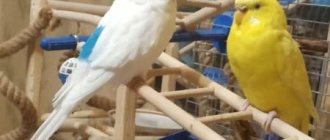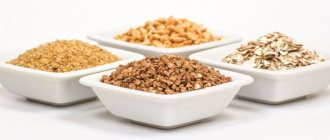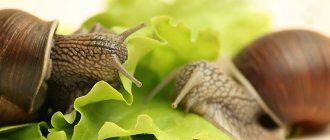Home » Articles about ducks » How many eggs can you put under an indo-duck?
Muscovy ducks are very popular among poultry farmers, as they grow quickly, lay eggs well, and also produce a considerable amount of tasty and nutritious meat. Knowing how many ducklings an incubator hatches, as well as the number of eggs that is optimal for natural incubation, you can regularly obtain healthy young animals to renew the herd.
How Indian ducks fly
Puberty in birds of this species ends by 6-7 months. It is from this age that females begin to lay eggs, but it also happens differently.
When Indian ducks live in a cold house, without additional sources of light in the winter, the onset of egg production, regardless of age, is postponed to spring. In a barn, where the air temperature does not drop below +15 °C, and daylight hours are maintained at 10-11 hours, muskellunges produce their first eggs before the age of 8 months.
The volume of production for each annual cycle is, on average, 80 pieces. If the nest is not cleared from the clutch in a timely manner, after 2 weeks the duck begins incubation. Usually this instinct is triggered if there are 13 to 15 eggs accumulated.
Muscovy ducks lay eggs first in March-April and then in August. Their offspring hatchability is quite high - with proper care of the hen, it reaches from 90 to 94%.
A little about the bird
The Muscovy duck does not require special conditions, it is quiet and calm.
The bird has good resistance to various diseases. Also, the duck is not picky about food. And these are not all the advantages of this type. Muscovy ducks gain weight quickly and don't need a lot of food to do so.
True, the chicks of this species are more whimsical and capricious. This is especially evident when the brood is born in the autumn.
But if you adhere to basic rules, this period will not bring any special difficulties. All the difficulties experienced in the process of the appearance of ducklings will be justified when the result is obtained. After all, poultry meat has excellent nutritional properties and eggs contain good nutrients.
Following simple rules will give results in the form of healthy and numerous offspring
How to prepare a nest
In order for incubation to go without problems, it is important to provide the bird with a comfortable and safe place, namely:
- Place a clean basket (a box without a front wall, 0.4 m x 0.5 m in size and 0.4 m in height) in the quietest and darkest corner of the barn. Cover the bottom with a layer of dry sawdust, lay soft oat straw on top, which the duck will subsequently cover with a “pillow” of its down. You should not use cotton wool or other soft fillers, they will only scare away the hen. If the nest gives off foreign odors, she will also not sit down. In the cold season, the box must be insulated from the bottom and along the edges.
- Ensure optimal heat and humidity conditions, as well as good ventilation of the room, eliminating drafts.
- Make sure in advance that small predators cannot enter the house.
It is important that young animals are not kept in the barn where the nests are located. Having discovered the presence of chicks, the hen can show maternal instinct and leave the clutch ahead of time.
It is important to know
The indo-duck, or bird of the Muscat breed, is considered unpretentious in food and the living conditions provided, however, the offspring born in the autumn can be called capricious (late ducklings are especially picky about the length of daylight hours and temperature fluctuations). But don’t despair, because the effort spent on getting a healthy brood pays off later (tastier meat, healthy eggs).
The Indian duck lays eggs only a couple of times a year, therefore, everything must be done to ensure that the birds leave the roost.
What exactly? First of all, allocate a separate room with a nest for her, secondly, balance the diet (during incubation, give food fortified with vitamins and microelements, plus feed strictly at the right time, observing the quantity), thirdly, ensure a flow of fresh air and eliminate sudden temperature fluctuations in the chicken coop
This is the point where you need to pay attention, because lack of oxygen is detrimental to all living things.
In the warm season, you can take the hen out for a short walk (this is necessary if the duck has sat on the clutch for a long time and does not want to leave it even for a couple of minutes). If cold and damp days arrive, walks should be canceled (let the ducks sit on their eggs).
Following this advice will help maintain the health of the bird.
But then what about the delivery of fresh air to the chicken coop? Everything is simple here, because it is enough to make a small window directed towards the south or east and open it correctly (the cold air flow should not be directed towards the duck that is hatching the ducklings).
As for the chicken coop, they put a layer of straw on the floor, more than 3-4 cm thick, and place a drinker and feeder not far from the place where the duck sat down to prevent the cessation of hatching.
It is important not to forget to clean the hatching rooms daily to eliminate the risk of developing a stench and death of the hatched ducklings (it is better to choose the most optimal days: when the birds have become accustomed to the nests and have gone for a walk). Important: drinking water, like feeders, needs to be changed as often as possible (this is a natural hygienic requirement)
Important: drinking water, like feeders, needs to be changed as often as possible (this is a natural hygienic requirement)
How to choose a hen and place it on the nest
In its natural habitat, the musk duck chooses the hollows of large trees to hatch. That is why a house in a barn will be more comfortable for her than an ordinary open box. When the bird has settled, it is separated from the general flock by a fence so that the male and its laying neighbors are not disturbed. A bowl with food is placed nearby, as well as a drinking bowl with cool, fresh water.
To properly form a waterfowl, the egg requires high humidity. To maintain it, the female needs to bathe regularly. Sitting wet on the eggs, it provides optimal moisture to their shells.
Indo-ducks usually do not create problems associated with a reluctance to hatch offspring. However, when choosing a hen, it is better to give preference to a bird that:
- moderately well-fed, healthy, and has all the external signs of its breed;
- has reached the age of puberty;
- active, but not aggressive;
- demonstrates special behavior - squeaks, climbs into the nest, sits in it for a long time and intensively picks off the fluff, arranging the house.
The selected individual is tested before being entrusted with laying eggs. Dummy eggs (plastic or wooden) are placed at the bottom of the box (box), and then the behavior of the duck is observed: if it sits down, and for 3-4 days in a row it gets up only to peck food, bathe or relieve itself, all in ok.
You can arrange one more test - try to drive the female away from the nest. If she hisses indignantly, flaps her wings and returns, the dummies can be safely replaced with eggs collected for incubation. A bird that runs away in fear and then walks around the barn and yard for a long time is not suitable for incubation.
In the first 7-10 days, the hen should be constantly monitored. It’s bad if she often leaves the clutch, even worse when she doesn’t get up at all. Excessive zeal can result in hunger and thirst for the bird itself, as well as overheating and oxygen deficiency for the eggs. Such a mother should be forcibly taken to the dishes with food and water.
Conditions for the birth of ducklings, what to do next
During the incubation process, the female musk duck moistens the shell with water, turns it over and throws out the unusable eggs, and cleans off the top layer of the shell for better gas exchange. Newborn chicks are left with their mother or taken into the house.
Day-old baby ducklings do not know how to eat and drink. It is necessary to crumble the hard-boiled egg yolks and sprinkle them on the backs of the ducklings - the rolling crumbs attract the attention of the chicks, and the kids peck them off. If unsuccessful, the chicks are fed from a pipette.
Feeding scheme:
- 1st day - 5-6 times;
- 2-7 days - 4-5;
- 7-30 days - 3-4 times;
- starting from one month of age - 2-3 meals a day.
To feed newborn babies, just put their beaks in a bowl of water, and they will understand that they need to drink.
Muscovy duck nest
For children who do not stay with their mother, well-lit, warm boxes are made. For 1 sq. m there should be 15-16 ducklings.
Humidity - 65-70%, temperature for the first 5 days - about +30 ° C. From the 6th to the 10th day the temperature is reduced to +23...+24 °C, from the 16th to the 20th day - to + 18…+22 °C. Grown-up ducklings are allowed into the house and cared for like the rest of the flock.
How to spot a good hen
A good mother has a calm, but not lethargic character . It is better not to involve aggressive individuals in hatching. If the expectant mother behaves ideally, she is still tested at least on dummies.
A caring female will leave the nest to feed, rinse herself and hurry back to the clutch, which, by the way, should fit entirely under her.
Important! If an Indian duck has left her usual place and is in no hurry to return (for example, she has left the poultry house for fresh air), you should not trust her offspring.
How many eggs can you lay?
A female muskellunge can hatch 15 to 20 eggs of her species at a time. Their exact number largely depends on the size of the bird - the larger it is, the larger the clutch. When determining how many eggs can be placed under an indo-duck, it is important not to go overboard with the quantity. Eggs that are poorly covered by the hen's body are unlikely to warm up properly, so it is recommended to remove the excess ones from the nest.
Gusinykh
Indo-ducks tend to be responsible brooders, so they can be used to breed other poultry, such as geese. New eggs are laid on day 5-6, carefully, without disturbing the order in the nest. This is done during periods when the female is away for a short time on her business. The best time for manipulation is evening. The optimal quantity is from 5 to 9 pcs.
Goose eggs are larger than duck eggs, making them more difficult for the duck to turn. Given this circumstance, the owner should carry out this important mission when the bird is absent from the nest.
After 7-10 days, the masonry is checked with an ovoscope. On 29-31 days from the start of incubation, the goslings should be born. Eggs in which embryos are not detected during ovoscopy are subject to culling.
Kurinykh
The incubation period for musks ranges from 33 to 35 days. Knowing how many days an incubator hatches ducklings, you should be especially careful when placing chicken eggs in the nest. The fact is that:
- The body temperature of a duck is higher than that of a chicken. Because of this, problems with fetal development are likely due to overheating and lack of oxygen;
- chicks hatch much earlier, so from 19-20 days you should regularly check the nest;
- The Indian duck is dissatisfied with the appearance of foreign chicks. To prevent the mother waterfowl from pecking the chicks, they should be removed from her immediately after hatching.
The optimal number of chicken eggs placed in a duck clutch is no more than 7 pieces. When a musk female is trusted to hatch chicks exclusively, the amount of incubation material can be increased to 15-20 pieces.
Indyushinykh
Indo-ducks are also often used to breed these large birds, especially since the incubation period differs slightly. Turkey eggs, like goose eggs, are larger than duck eggs, so periodically they will have to be turned by hand. One Muscovy duck can hatch up to 14 turkey poults.
Small tips
It was already said earlier that Indian ducks are not whimsical in courtship and maintenance. The Indian should sit in her favorite place. If this place is occupied by another duck family, then the family is transferred to another place, giving preference to the hen. The timing of the initial laying of eggs depends on the age of the female. Quite often this happens in February or March.
Female ducks are considered tame birds, you don’t have to run after him, they are given into your hands. In principle, a duck is capable of hatching eggs under any conditions. The main thing is to follow these small tips:
- Lighting in the barn is carried out carefully and carefully. Adult Muscovy ducks and their ducklings are sensitive to light. The best option is to make the lighting in the barn orange-red.
- Almost every nest should have a container of water. This allows you to provide the required humidity in the atmosphere.
- The egg cell of the Muscovy duck is cyclical. At the beginning of fertilization, the productivity level is 96%, closer to autumn it decreases.
- Eggs laid by a duck should be signed immediately. The date is indicated on them. They can be placed in an incubator, and after two weeks the eggs are placed on the hen. This procedure allows for better hatching of ducklings.
- There is no need to worry when a duck does not sit in the nest for a long time. Just make sure the eggs are well wrapped in fluff. Ducks sit down on their own after a certain time. The cooling process is necessary for hatching the eggs. It allows for normal gas exchange for successful excretion.
- During planting, it is not recommended to give the duck wet mixtures; it is better to simply give dry grain.
- In the last two weeks, the hen needs to be kept quiet. It is advisable not to carry out construction work at this time.
When the duck is ready to lay her eggs, she begins to fuss, plucking her down from the chest part of the feather cover. She often sits in the selected nest, and when you try to pick her up, she begins to squeak. Does not allow the drake to approach him.
The post How many days does an Indian duck sit on eggs appeared first on SeloMoe.
How to select eggs to put under an indo-duck
Incubation material begins to be collected 10 days in advance. Only the product is selected:
- medium size;
- with intact shell;
- without stains and limescale deposits on the surface.
Store the future masonry in a cool room where the air temperature is within +9...- +14C. The eggs are placed in a shallow basket or cardboard box, arranged horizontally, but in no more than 2 rows.
If a corrugated stand is used, the material can be laid out vertically, with the sharp end down.
Before placing it in a duck’s nest, the shell is carefully cleaned from traces of adhering dirt, but not washed, so as not to damage the outer protective film. If this happens, the embryo will experience a moisture deficiency and is unlikely to survive to the end of incubation.
Caring for a hen during the brooding period
To breed good offspring, you need to take care of the hen. During hatching, it is strictly forbidden to disturb or frighten her. Each bird must have its own nest; it always chooses the place itself. The nest should be in a secluded place, away from other birds and animals. Having decided to approach the bird, you need to warn it of your approach in a calm tone so that it does not get scared and abandon the nest.
The farmer must provide the bird with regular walking and feeding. The duck is allowed out for a walk for twenty minutes and always once a day to a pond or place where it can swim.
Why does the Indian duck leave the nest?
It happens that the female leaves the nest for a long time or stops incubation prematurely. The reason for this may be:
- too young or, on the contrary, old age of the bird;
- the presence of down and feathers, as well as intestinal parasites. In the latter case, the clutch is often fouled and the contents of the eggs are infected;
- insufficient or excessive size of the nest, its location in a too bright and/or noisy place;
- shortage of food and water experienced by the hen;
- critically low number of eggs in the nest.
It happens that Indian ducks get rid of some eggs by rolling them out from under them. This can happen when the embryo dies due to damage to the shell. To ensure that the bird does not worry, the owner should periodically inspect the clutch, and then remove and dispose of damaged specimens. Among other things, this will prevent infection of healthy eggs.
How long does it take for ducklings to come out of their shell?
Beginning poultry keepers are often concerned about the situation when the first chicks have already been born, but there are many whole eggs left in the nest. Will the female leave the nest early? So, the right mother must “sit out” the remaining incubation material for 2 days. During this period, the firstborns will not get so hungry as to force the hen to take them to the feeder, and the remaining chicks will hatch.
When the hatching of the young is delayed, the dried babies are placed in a warm box and given water and first food in the form of crushed boiled eggs. When the last duckling leaves its shell, the nest is cleared of debris, and the offspring, in full force, are returned to the duck for further care and education.
Domestic duck or as it is also called white duck
The domestic duck, or as it is also called the white duck, hatches its young for about 26-28 days. After hatching, when the chicks are dry, they need to be taken away and placed in a separate place, so as not to interfere with the duck’s hatching of the remaining chicks. If you leave them, she will abandon the eggs that remain in the nest and will devote time to the chicks that have already hatched.
Before approaching the nest, you need to warn the hen about your presence in any way; expectant mothers do not really like unexpected appearances.
During the process of birth or hatching, there is no need to help the chicks. They are strong enough to crawl out of the egg themselves.
Birds that are prone to brooding stop laying eggs at a certain period and may not leave their nests for several hours.
The best time for hatching is in the spring.
It is not recommended to place more than 13-15 eggs under a duck.
Mixed masonry: possible problems
When planning to place eggs of other poultry under the hen, you should understand that:
- a smart female may not accept them. Differing in size and color, it sometimes pushes other people's products out from under itself;
- the heavy weight of a duck often causes damage to the shells of chicken eggs;
- you will have to carefully monitor the birth of “foreign” chicks due to the physiological differences in incubation periods in different birds;
- Chicks of other species that are not separated from their foster mother in time may die due to her aggressive behavior.
In addition, hatchability in a mixed clutch may be minimal. This is due to the difference in temperature and humidity values that are optimal for the eggs of different poultry.


